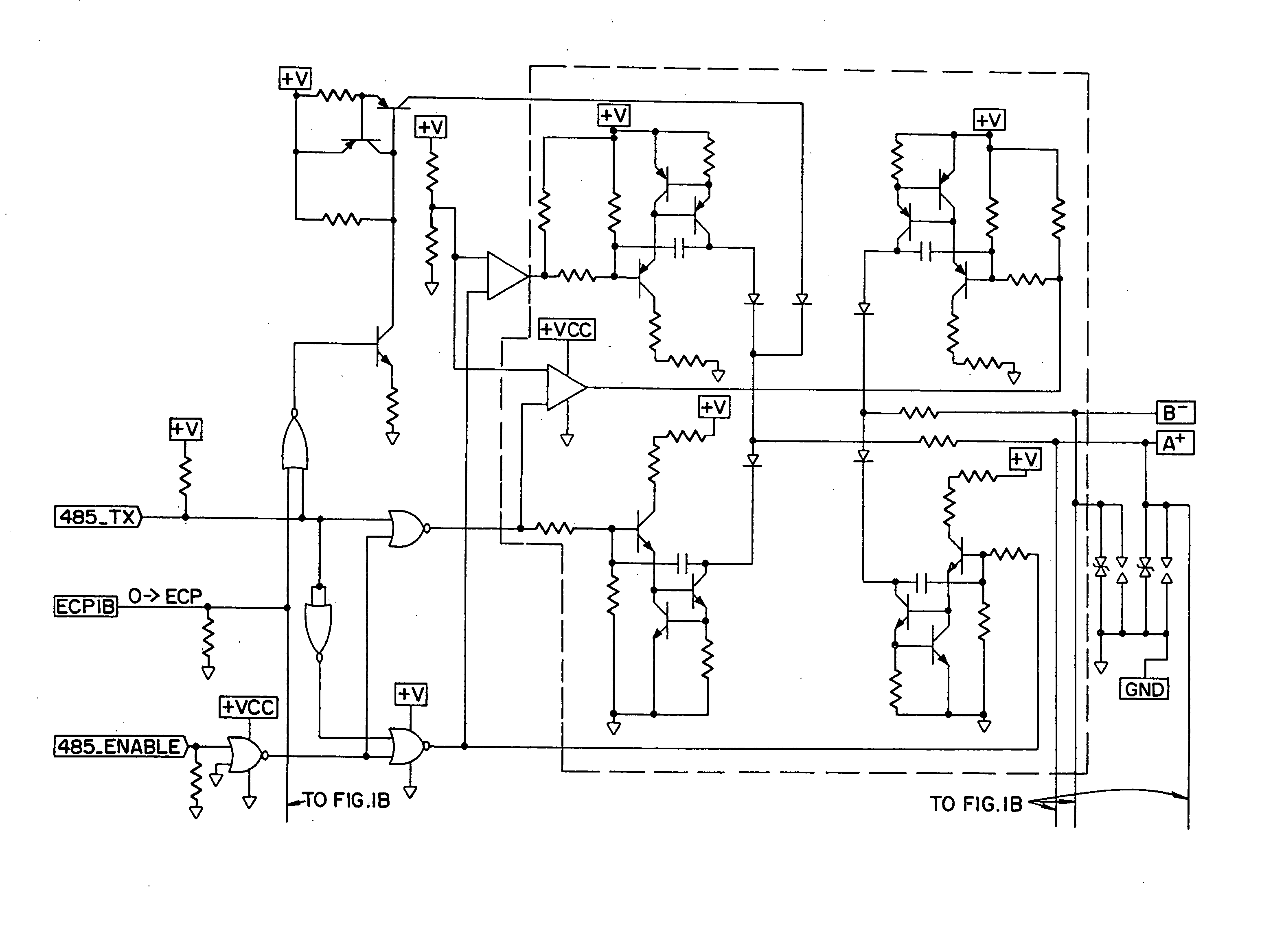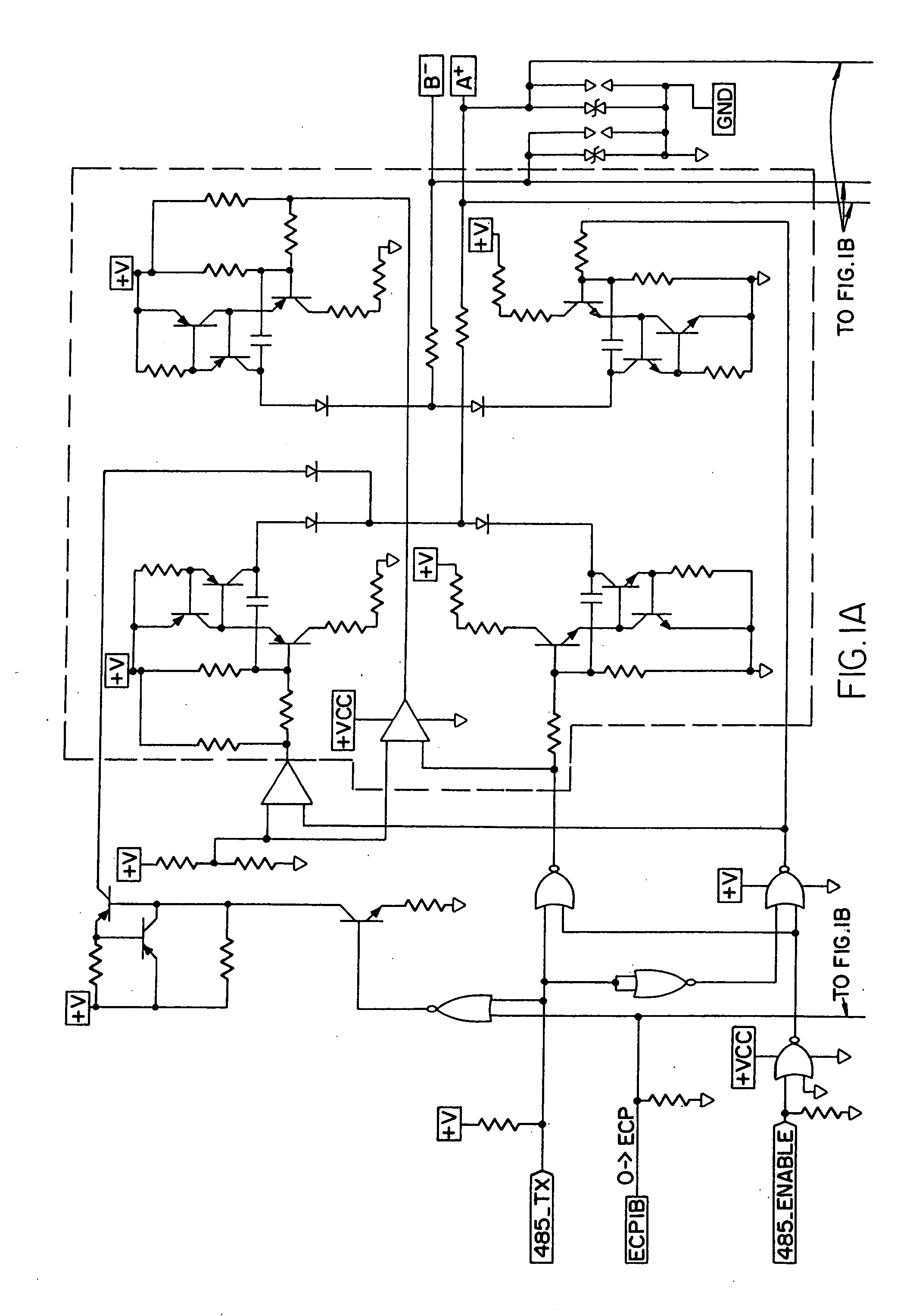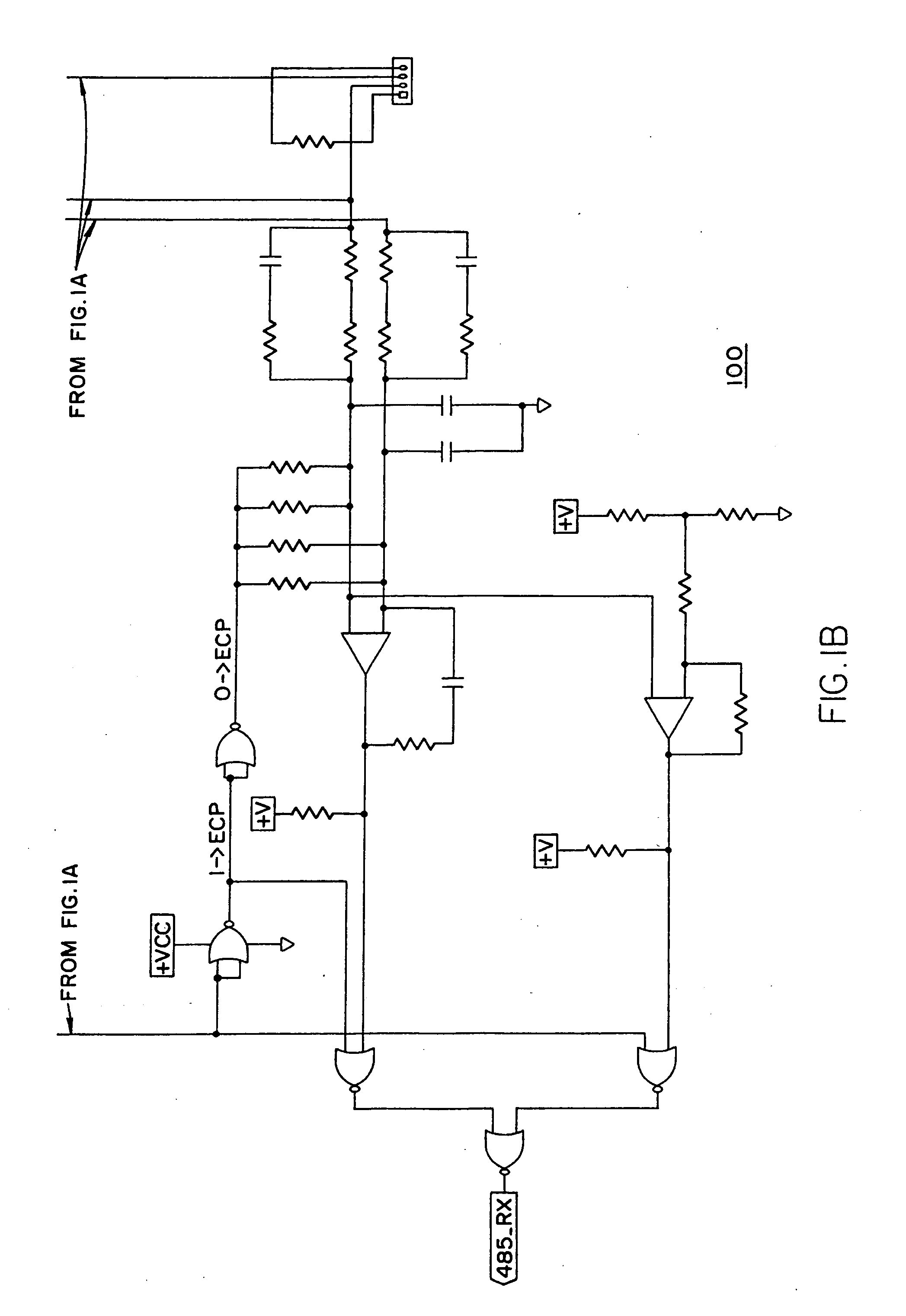Feedback circuit for line load compensation and reflection reduction
a feedback circuit and line load technology, applied in the direction of instruments, computation using denominational number representation, pulse technique, etc., can solve the problems of star topology having the added cost of a hub, failure of the entire network, and difficulty in troubleshooting network issues, etc., to achieve the effect of reducing reflection
- Summary
- Abstract
- Description
- Claims
- Application Information
AI Technical Summary
Benefits of technology
Problems solved by technology
Method used
Image
Examples
Embodiment Construction
[0022] Differential drive circuits, such as the IB 485 driver, require a free typology, thus the line load is variable. However, allowing a variable load on a signal line may result in signal reflection due to unmatched impedances. To produce an output that is independent of the load, the present invention integrates feedback capacitors into the differential drive circuitry.
[0023] The feedback capacitors are selected so that the resulting rise / fall time is the slowest practical rise / fall time for a particular baud rate. Preferably, the slowest rise / fall time is ⅓ of the maximum bit transmission time, determined by the desired baud rate and maximum transmission line length. The rise / fall time is defined as the product of the capacitance and resistor time constant of the circuit. Therefore, the preferred rise / fall time is set by selecting the appropriate capacitance value of the feedback capacitor and / or adjusting the resistance of the feedback circuit.
[0024] The current through the...
PUM
 Login to View More
Login to View More Abstract
Description
Claims
Application Information
 Login to View More
Login to View More - R&D
- Intellectual Property
- Life Sciences
- Materials
- Tech Scout
- Unparalleled Data Quality
- Higher Quality Content
- 60% Fewer Hallucinations
Browse by: Latest US Patents, China's latest patents, Technical Efficacy Thesaurus, Application Domain, Technology Topic, Popular Technical Reports.
© 2025 PatSnap. All rights reserved.Legal|Privacy policy|Modern Slavery Act Transparency Statement|Sitemap|About US| Contact US: help@patsnap.com



